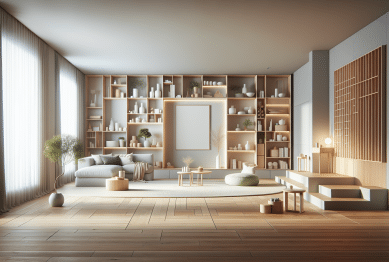In today’s fast-paced world, finding time for creativity amid a busy schedule feels increasingly challenging. Yet, creativity is essential—not only for artists or designers but also for problem-solving, innovation, and mental well-being across professions. Recognizing this, a growing trend emphasizes intentionally carving out space for creative thinking as a crucial part of productivity and personal growth.
This article will explore effective strategies on how to find time for creativity in a busy schedule. It will draw on recent studies and expert insights to offer practical, actionable advice that anyone can implement.

Why Finding Time for Creativity Matters
Creative thinking fuels innovation, adaptability, and job satisfaction. According to a 2024 study by Adobe, 75% of workers say creativity is key to their job performance and personal fulfillment . However, many professionals struggle to balance creativity with daily tasks, deadlines, and distractions.
Time scarcity is the main barrier. The American Psychological Association reports that multitasking and constant interruptions reduce opportunities for deep, creative thought . This makes intentional time management strategies vital for fostering creativity.
Emerging Trends in Making Time for Creativity
Several new trends are gaining traction in workplaces and personal routines that highlight how people are adapting to prioritize creativity despite tight schedules.
1. Micro-Creative Sessions
Inspired by microlearning, the concept of “micro-creative sessions” involves dedicating short, focused blocks of time—sometimes as brief as 10 to 15 minutes—to creative work. This trend recognizes that even brief creative intervals can spark meaningful ideas without requiring large time commitments.
2. Digital Detox and Focus Periods
With constant digital distractions, many professionals are incorporating “digital detox” periods during the day. Blocking off dedicated time free from emails, social media, and notifications allows the brain to engage in uninterrupted creative thought .
3. Integration of Creative Warm-ups
Creative warm-ups—simple exercises like freewriting, sketching, or brainstorming—are becoming a routine part of daily work in creative industries. These warm-ups stimulate divergent thinking early in the day or before major tasks, helping individuals transition into creative mindsets more easily .
Practical Ways to Find Time for Creativity in a Busy Schedule
Finding time for creativity requires deliberate effort and often some restructuring of habits. Below are practical strategies to incorporate creative time without disrupting your overall workflow.
1. Schedule Creativity as a Priority
Treat creative time like any other appointment or meeting. Block out specific periods in your calendar dedicated solely to creative thinking or projects. This intentional scheduling signals to yourself and others that creativity is non-negotiable.
2. Use the Pomodoro Technique for Focused Creativity
The Pomodoro Technique involves working in focused 25-minute intervals with 5-minute breaks. Use these intervals specifically for creative tasks, allowing bursts of intense focus followed by short rests that refresh your mind .
3. Identify Your Peak Creative Times
People have natural rhythms of energy and focus throughout the day. Some are more creative in the morning, others late at night. Tracking when you feel most imaginative helps you align creative work with these windows for better productivity.
4. Eliminate or Delegate Non-Creative Tasks
Free up time by delegating routine or administrative duties when possible. Reducing task overload helps create mental bandwidth to focus on creative efforts.
5. Practice Mindfulness and Reflection
Regular mindfulness practice can clear mental clutter and improve your ability to generate new ideas. Reflection periods, even brief ones, help consolidate thoughts and spark creativity.
How Companies Support Creativity Despite Busy Workloads
Organizations increasingly recognize that fostering creativity benefits innovation and employee satisfaction. Here are ways companies support creative time within busy work environments:
- Flexible Work Hours: Allowing employees to choose when to work enables them to use their peak creative periods effectively.
- Creative Break Zones: Some offices provide spaces designed to inspire creative thinking, from quiet rooms to collaborative lounges.
- Innovation Time Policies: Companies like Google famously allot “20% time” where employees dedicate a portion of their week to passion projects outside regular tasks.
- Training Programs: Workshops on creative thinking and time management help employees learn how to build creativity into their workflows.
Benefits of Prioritizing Creativity
Making time for creativity yields multiple benefits that extend beyond work quality:
- Increased Problem-Solving: Creative thinking improves the ability to approach challenges from new angles.
- Stress Reduction: Engaging in creative activities can lower stress and improve mental health .
- Career Growth: Innovation and originality often translate into recognition, promotions, and career advancement.
- Personal Satisfaction: Creativity nurtures a sense of accomplishment and fulfillment.
Conclusion
How to find time for creativity in a busy schedule is a pressing question in modern work culture. The answer lies in deliberate scheduling, understanding personal rhythms, eliminating distractions, and embracing emerging trends like micro-creative sessions and digital detox periods.
By recognizing creativity as a priority rather than a luxury, individuals and organizations can foster environments where focused creative time is a regular part of the day. Doing so not only improves productivity and innovation but also enhances overall well-being and job satisfaction.
References
- Adobe. (2024). Creativity and Work Performance Report. https://www.adobe.com/creativity-report
- American Psychological Association. (2023). Stress and Creative Activities. https://www.apa.org/news/press/releases/stress-creative-activities
- Harvard Business Review. (2024). Micro-Creative Work Sessions. https://hbr.org/2024/03/micro-creative-work
- Forbes. (2024). Importance of Digital Detox for Creativity. https://www.forbes.com/sites/digitaldetox/2024/02/importance-of-digital-detox









